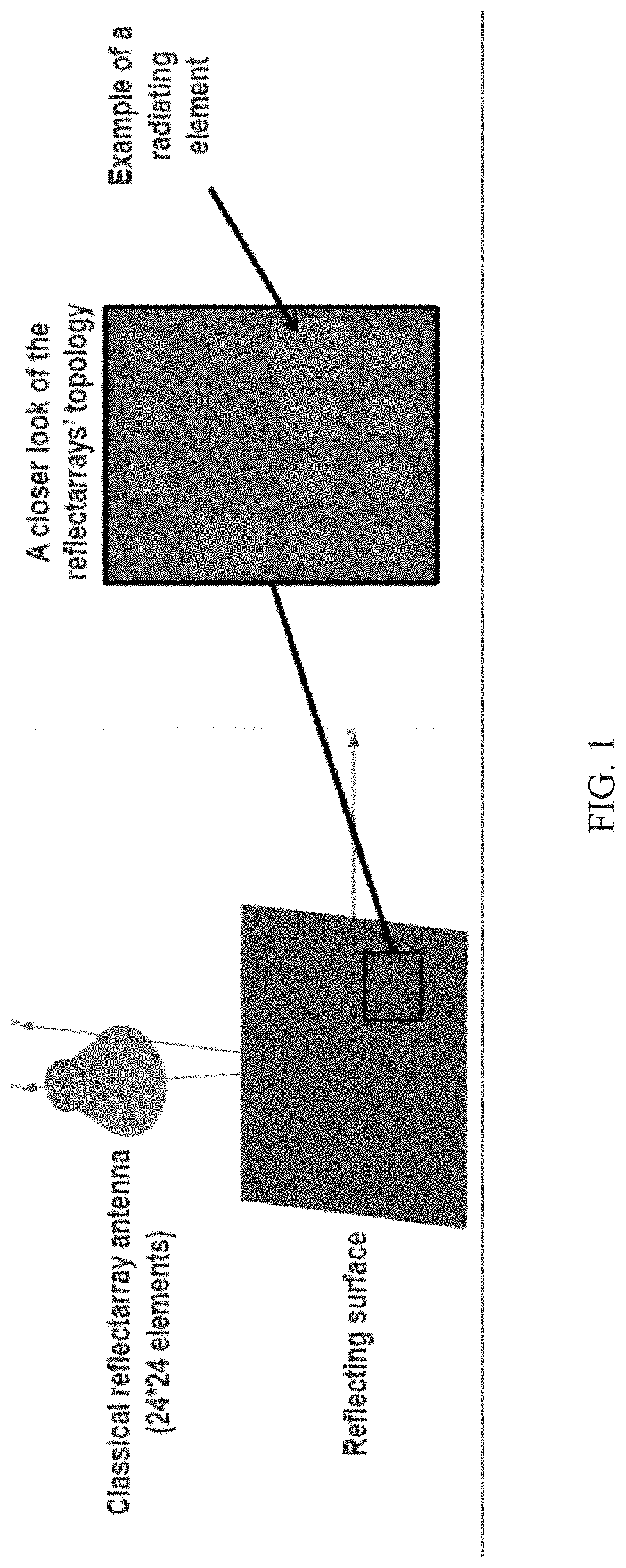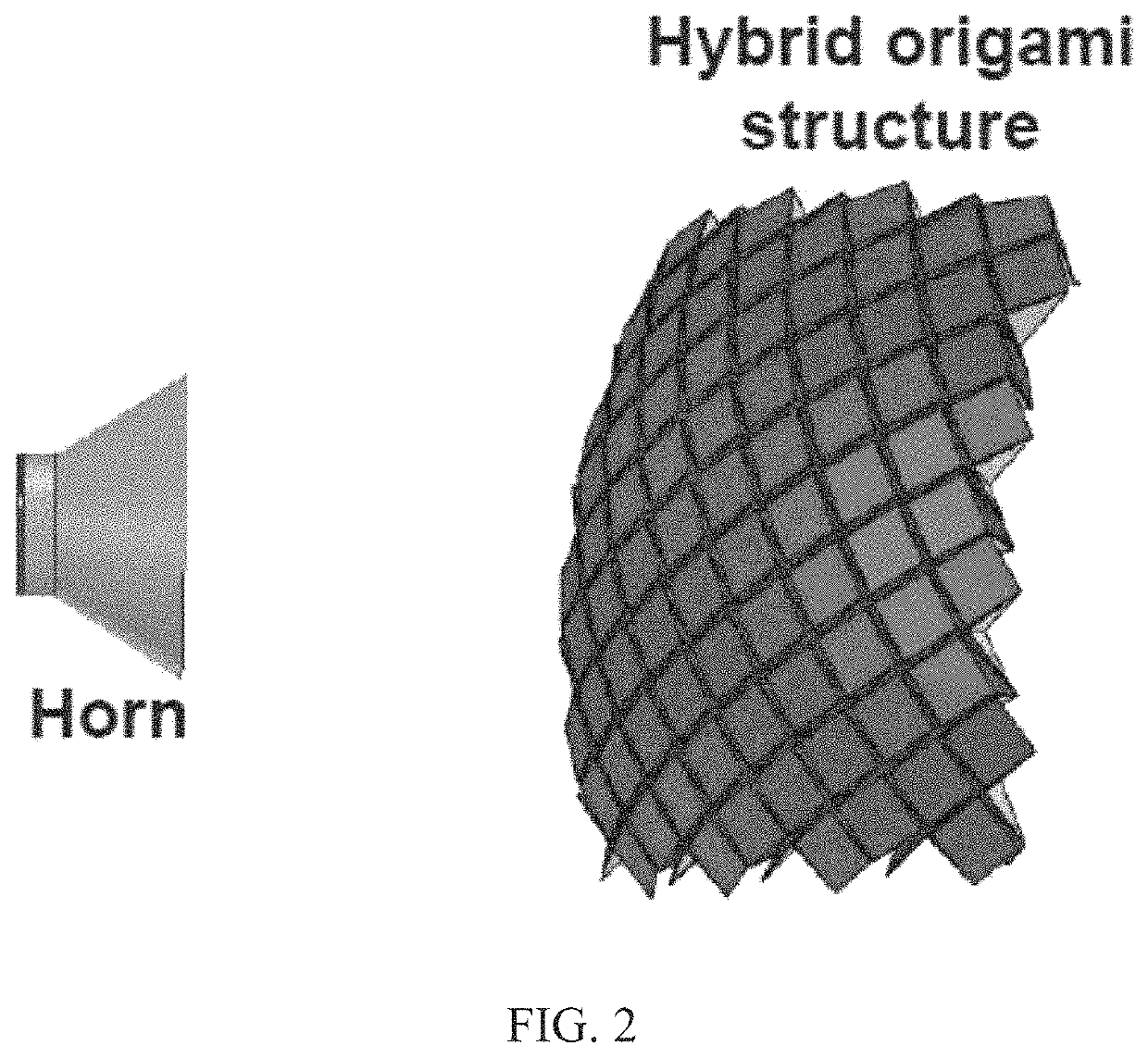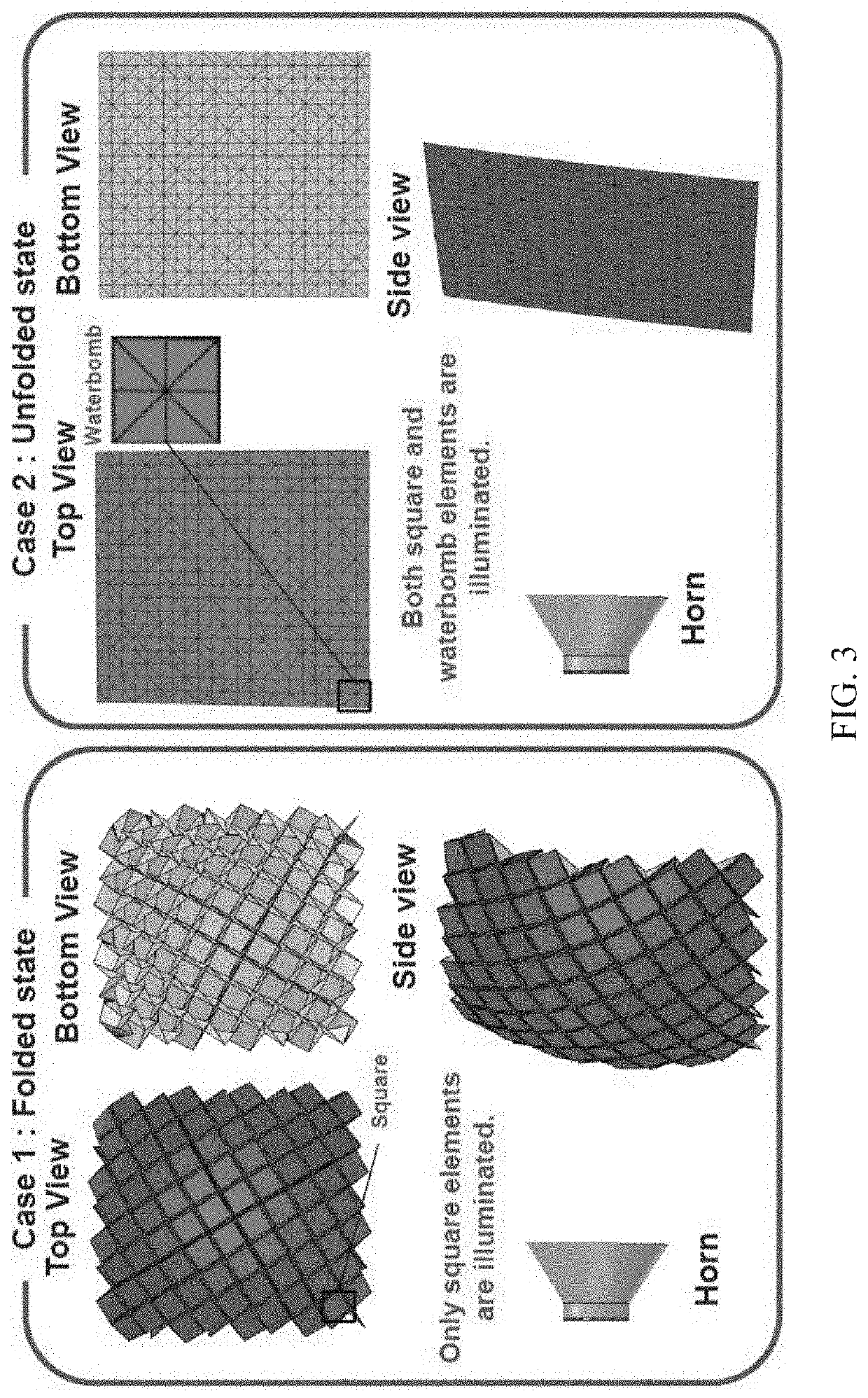Reconfigurable arrays with multiple unit cells
a technology of reconfigurable arrays and unit cells, applied in the direction of individual energised antenna arrays, antennas, electrical apparatus, etc., can solve the problems of increased power demands and costs, power consumption, and required feeding networks, and achieve the effect of changing their electromagnetic behavior
- Summary
- Abstract
- Description
- Claims
- Application Information
AI Technical Summary
Benefits of technology
Problems solved by technology
Method used
Image
Examples
Embodiment Construction
[0018]Embodiments of the subject invention provide novel and advantageous arrays that are deployable and can change their electromagnetic (EM) behavior by changing their shape. The arrays can steer the beam using folding techniques and / or can achieve multiple operation states by folding the structure. The arrays can fold and unfold using any suitable actuation system known in the art (e.g., a motor or robotics). An array can include a foldable substrate (e.g., an origami substrate) with one or more antenna elements (e.g., an antenna element in each unit cell) disposed thereon. The foldable substrate can have predefined folding lines (e.g., folding lines for mountain- and / or valley-style folds) and / or hinges such that the foldable substrate can be folded into at least one particular predetermined shape in each folded state and can lay flat in an unfolded state. In a folded state, a first plurality of unit cells is visible from above the array and can be configured to steer in a parti...
PUM
 Login to View More
Login to View More Abstract
Description
Claims
Application Information
 Login to View More
Login to View More - R&D
- Intellectual Property
- Life Sciences
- Materials
- Tech Scout
- Unparalleled Data Quality
- Higher Quality Content
- 60% Fewer Hallucinations
Browse by: Latest US Patents, China's latest patents, Technical Efficacy Thesaurus, Application Domain, Technology Topic, Popular Technical Reports.
© 2025 PatSnap. All rights reserved.Legal|Privacy policy|Modern Slavery Act Transparency Statement|Sitemap|About US| Contact US: help@patsnap.com



